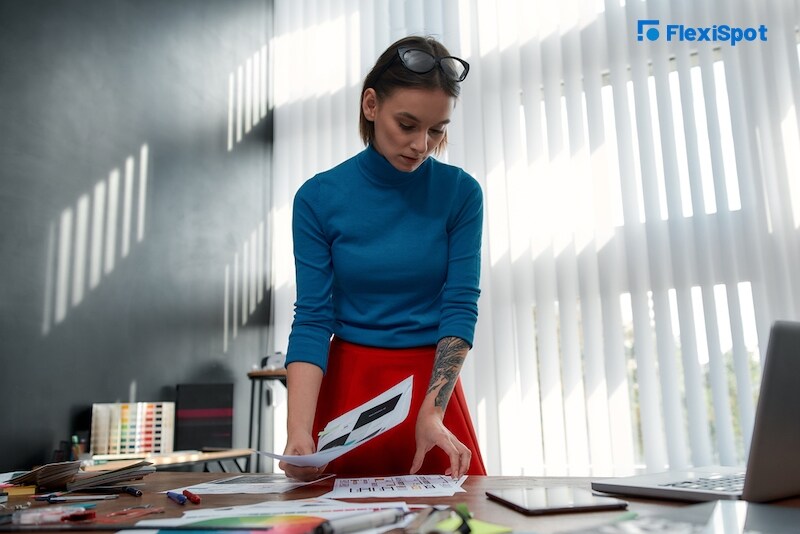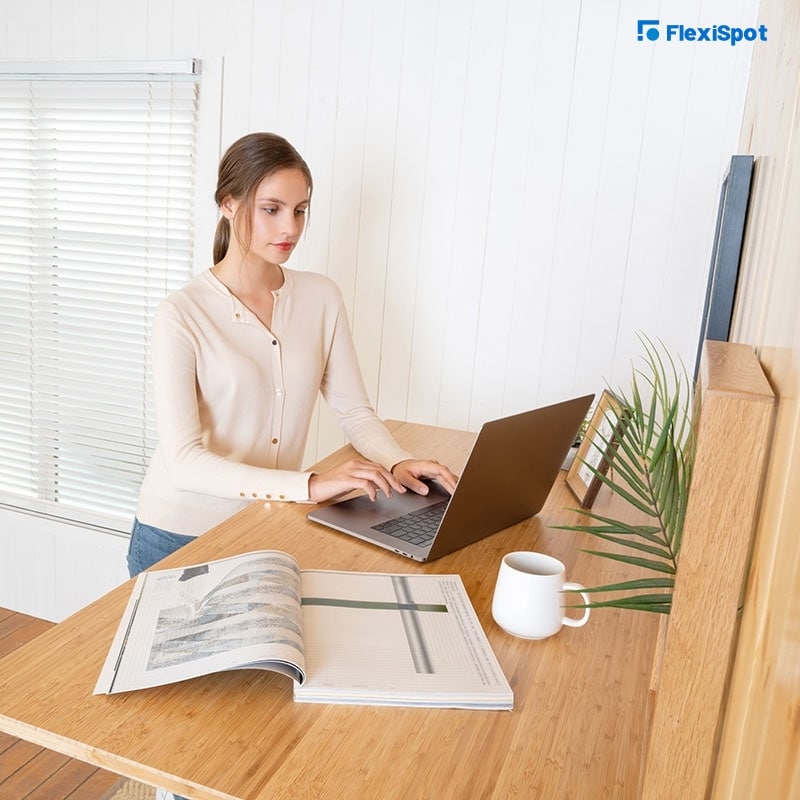It is quite known that graphic designers have great-looking desks and workspaces. Their desks are far from boring nor do they follow a similar aesthetic that falls under a certain category. What it means is that they keep their desks neat and tidy, giving them easy access to what they need at any point in time.
It’s hardly avoided for graphic designers to work on various projects at the same time, which makes being organized a compulsory trait for them. Simply put, the job calls for them to be neat and tidy, or else they won’t complete their projects properly and efficiently.
But even then, of course, there are some who are part of the exception. If you’re a graphic designer who is in need of “uber organized” tips, then you came to the right place. Below are tips to make sure your workspace is neat and tidy.
Get rid of clutter
We all want to maximize the functionality of our workspace. To do so, it must be organized and only contain the things that you need as of the moment at work.
You might think that Albert Einstein once said, “If a cluttered desk is a sign of a cluttered mind, of what, then, is an empty desk a sign?” There might be some truth to these as the great geniuses throughout human history have been known to have messy desks. It doesn’t rationalize having one though. You could still be inspired by these geniuses with their uniqueness, creativity, clarity of thought, perception of reality, and idiosyncrasies about their learning and ambition.
What is Wrong with Clutter?
If you think about it clearly, clutter is not merely a mess of things. It could weigh heavily on our spirits and affect the way we work. At some point, we all have an area in the house with the sole purpose of storing random items. Do you enter that place for peace of mind? Do you come in there to unwind or relax? Have you mustered the guts to unravel what you have dumped there and sort them out? We’ll be honest with ourselves. We could all agree that going through the clutter you’ve accumulated for a long time won’t be fun at all. You probably automatically avoid that room when the mere thought of it comes out.
Take this word of advice. The sooner you sort it out, the better your headspace will be.
Start Sorting
Remember that when you start sorting, it will require you to be organized. Let us see how you could organize your home office and workspace today.
Sorting Bins
Get three sorting bins and label one with “keep,” another with “throw,” and the last one for “donate.”
Keep
You need to ask yourself how often you use an item. New notebooks, stationery, and office supplies such as staplers and fasteners can be thrown in the bin marked as “keep.”
Look out for the things that are functional but don’t really belong anywhere near your workspace. There are times that items from another room will make their way to your desk without you recalling how they did. You probably used a knife instead of scissors to open a box that you recently got from the mail. So you might have found the knife in your workspace and will put it now in your “keep” box—noting that you have to return it to the kitchen where it is really stored.
Throw
Of course, garbage or things that you can’t use anymore will be sorted in the “throw pile.” These are for notebooks you’ve used up all the leaves and don’t need anymore for future reference. These are for pens whose ink has dried up. These are for empty boxes of thumbtacks and staples. Get rid of all this junk and add it to the “throw pile,” to be thrown away after you’ve sorted everything out.
Donate
Since you ask yourself if you still use something or will still be using it, anything else that does not fall under this category but is in good condition could be donated. Be sensitive and mindful of what you add to this pile, thinking about the people who will be receiving the items and making use of what no longer serves you. Do not add items that are ragged, broken, or soiled—throw these out and donate those in good condition.
Optimize Your Desk Layout
You have to make sure that your desk won’t affect your productivity for the worse because it’s where you spend most of your time working.
What Is the First Step in Setting Up a Workstation?
Before learning how to optimize your desk layout, let’s discuss the desk itself first. Graphic designers have sedentary jobs, which means they fall into the pit of prolonged sitting which may cause obesity, heart problems, poor mental health, and other illnesses.
On that note, Flexispot’s Standard Standing Desk (E2/E1) offers the solution that is perfect for you. Standing has tons of benefits and could improve the way you live your life.
How a Standing Desk Can Improve Your Work Life
As mentioned above, long hours of sitting cause the development of serious health problems in the long run. Using a standing desk will help you manage your weight, maintain a good posture, and keep productivity levels at a high.
According to a study, people burn 0.15 more calories per minute when they stand as compared to when they are seated. Standing requires one to release more effort, and when you’re standing up, the tendency is for you to move more whereas you could sit still for hours. Shifting one’s weight from one leg to another is already more activity than someone who just sits the whole day.
Science all tell us that when you stand more, you are less susceptible to strokes or heart problems when you’re much older.
You are not just buying a standing desk. You are buying your ticket to a healthier and more productive life.
Use a Standing Desk to Boost Your Energy While at Work
Many of FlexiSpot customers return with very satisfactory reviews on how standing desks helped boost their productivity.
When you stand more in a day, blood circulation is much better and steadier. It makes you more alert than you resorting to daydreams and getting lost in your thoughts without finishing your daily tasks first. Standing desks will keep you on your toes and get you going at work until you finish everything you’ve set out to finish for the day.
Because of all these, standing desks will be able to improve your work performance and keep you healthy at the same time.
Seiffen Laminated L-Shaped Standing Desk
It’s no surprise that this desk is one of Flexispot’s best-selling items. It can be best described as of great quality at an affordable price.
It has a spacious L-shaped design with an anti-collision safety feature. Its height ranges from 28.7” to 48.4.”
It only takes less than 40 minutes to assemble. It boasts of powder-coated steel tubing that could resist scratches and stains. It is stable at the highest setting and you can sit or stand without having to worry about issues concerning your spine health. You could make use of different workstation setups and this desktop’s shape can provide you with the versatility that you want. It is spacious and has rounded corners that users love. If in the event that it detects an obstruction or something unusual when it’s going up or down, this desk has an advanced anti-collision safety feature. It will automatically stop and reverse to ensure the user’s safety and prevent the item from getting damaged. This desk also comes with a height programmable control panel that has four memory buttons where you could save your preferred sitting and standing heights, switching postures with just one touch of a button. Its total weight capacity is 121 pounds. It has adjustable desk feet to stabilize your desk especially if it's uneven and slanted.
Go Digital
Nowadays, a graphic design largely uses a digital domain. It’s easy to keep workspaces spick and span because computers and drawing tablets are widely used in this industry. The clunky desktops are already a thing of the past.
But there are still many designers who hand-draw ideas and designs on paper before digitizing them.
Many people think it’s easier to map out the thoughts in their heads when they draw them out using pencils and pens. So if you’re a graphic designer who’s like this in the digital age, don’t worry—others are like you too, so just do whatever process works for you and your craft. You will just probably find a lot of paper and notebooks scattered on your desk, so just make sure to throw them out as soon as you’re done. Want to document the process? Then feel free to take photos and videos before you throw anything out.
When you work in a messy space, you may deal with anxiety and make your workspace look even untidier.
Digitize Your Work
After finishing on paper, don’t forget to digitize your sketches and drawings. Take a picture and file it under a desktop folder.
When you start working on a new project, you will notice bit by bit how your workflow has streamlined while you’re able to maintain a clear workspace. You could easily refer to your original sketch without any hassle.
Backup your files in an External Storage
Don’t forget that your files need a backup. These gadgets can malfunction anytime so if you have an important file, make sure you don’t keep just one copy of it in one place. Store all these devices, big and small, in a separate storage bin or desk drawer.
Bonus Tip
Organize your projects by labeling them with appropriate names and separate folders on your desktop. You don’t want to be left wondering which of the two files titled “Final Design 01” or “Final Design 1” contains changes.
Give these tips a try, and let us know how they helped your productivity!




